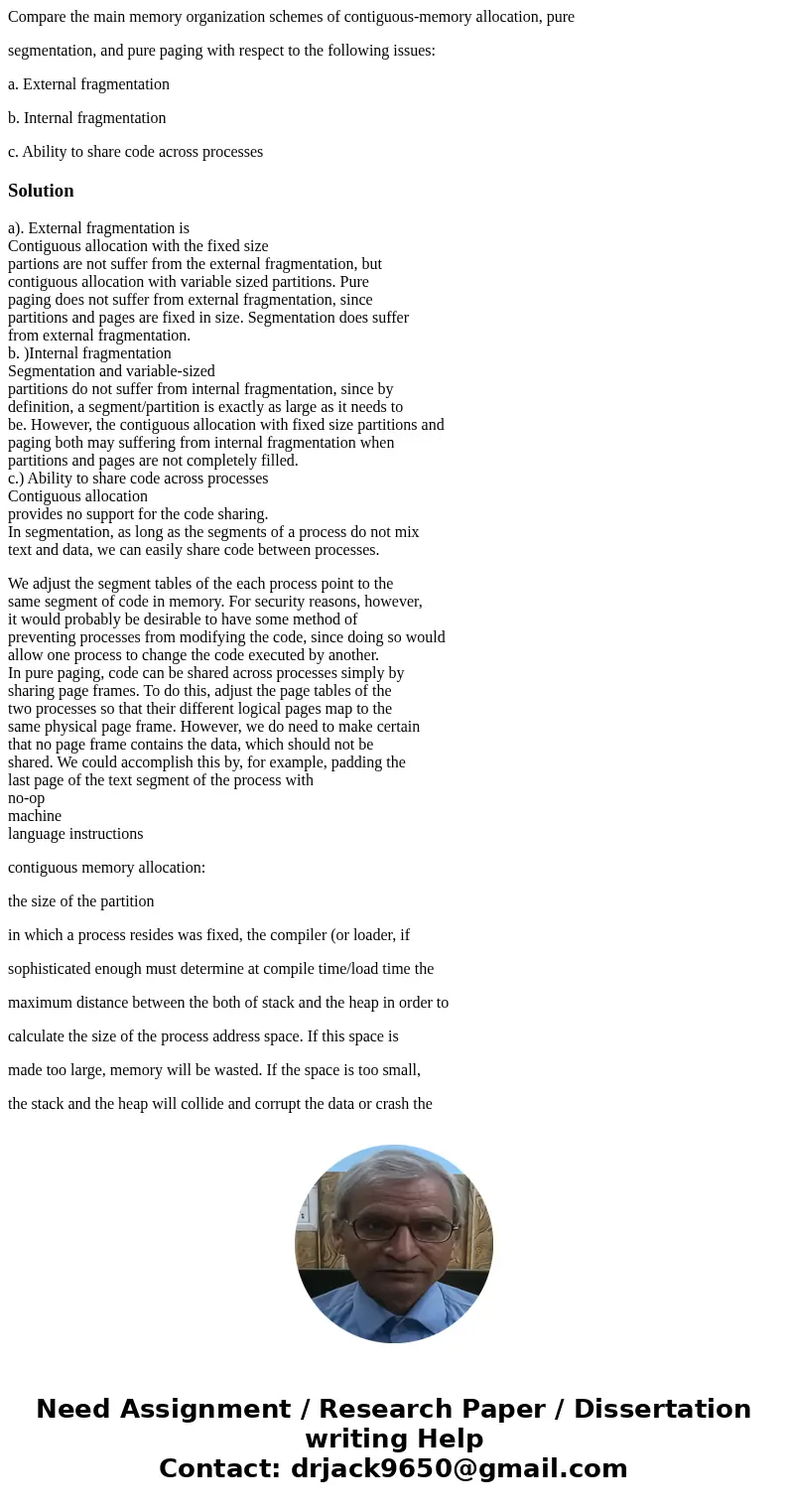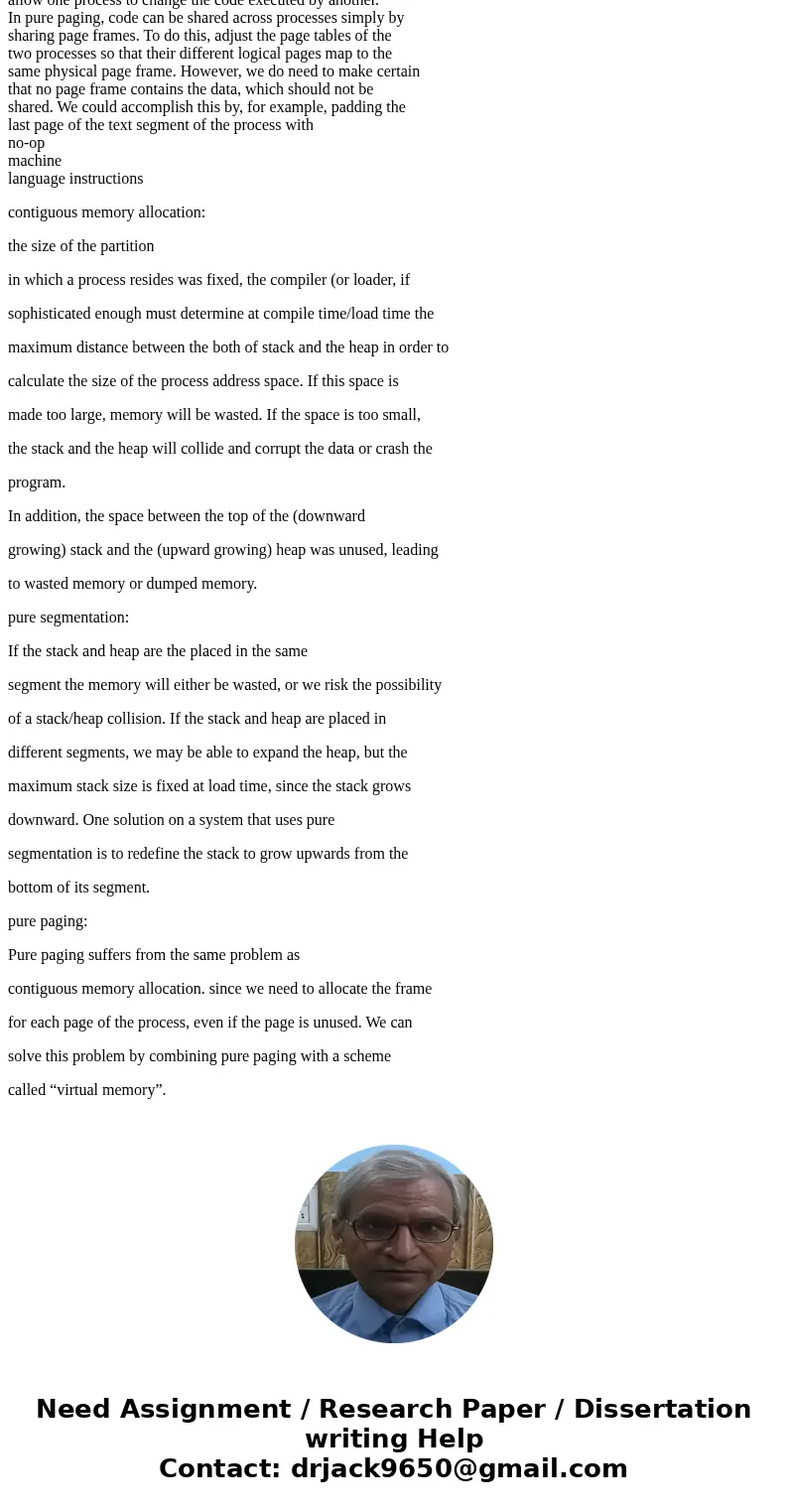Compare the main memory organization schemes of contiguousme
Compare the main memory organization schemes of contiguous-memory allocation, pure
segmentation, and pure paging with respect to the following issues:
a. External fragmentation
b. Internal fragmentation
c. Ability to share code across processes
Solution
a). External fragmentation is
Contiguous allocation with the fixed size
partions are not suffer from the external fragmentation, but
contiguous allocation with variable sized partitions. Pure
paging does not suffer from external fragmentation, since
partitions and pages are fixed in size. Segmentation does suffer
from external fragmentation.
b. )Internal fragmentation
Segmentation and variable-sized
partitions do not suffer from internal fragmentation, since by
definition, a segment/partition is exactly as large as it needs to
be. However, the contiguous allocation with fixed size partitions and
paging both may suffering from internal fragmentation when
partitions and pages are not completely filled.
c.) Ability to share code across processes
Contiguous allocation
provides no support for the code sharing.
In segmentation, as long as the segments of a process do not mix
text and data, we can easily share code between processes.
We adjust the segment tables of the each process point to the
same segment of code in memory. For security reasons, however,
it would probably be desirable to have some method of
preventing processes from modifying the code, since doing so would
allow one process to change the code executed by another.
In pure paging, code can be shared across processes simply by
sharing page frames. To do this, adjust the page tables of the
two processes so that their different logical pages map to the
same physical page frame. However, we do need to make certain
that no page frame contains the data, which should not be
shared. We could accomplish this by, for example, padding the
last page of the text segment of the process with
no-op
machine
language instructions
contiguous memory allocation:
the size of the partition
in which a process resides was fixed, the compiler (or loader, if
sophisticated enough must determine at compile time/load time the
maximum distance between the both of stack and the heap in order to
calculate the size of the process address space. If this space is
made too large, memory will be wasted. If the space is too small,
the stack and the heap will collide and corrupt the data or crash the
program.
In addition, the space between the top of the (downward
growing) stack and the (upward growing) heap was unused, leading
to wasted memory or dumped memory.
pure segmentation:
If the stack and heap are the placed in the same
segment the memory will either be wasted, or we risk the possibility
of a stack/heap collision. If the stack and heap are placed in
different segments, we may be able to expand the heap, but the
maximum stack size is fixed at load time, since the stack grows
downward. One solution on a system that uses pure
segmentation is to redefine the stack to grow upwards from the
bottom of its segment.
pure paging:
Pure paging suffers from the same problem as
contiguous memory allocation. since we need to allocate the frame
for each page of the process, even if the page is unused. We can
solve this problem by combining pure paging with a scheme
called “virtual memory”.


 Homework Sourse
Homework Sourse